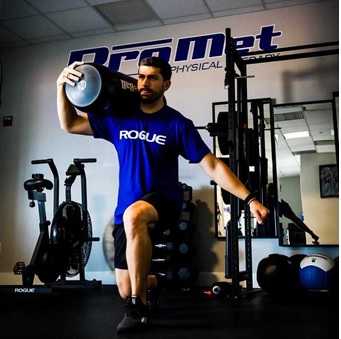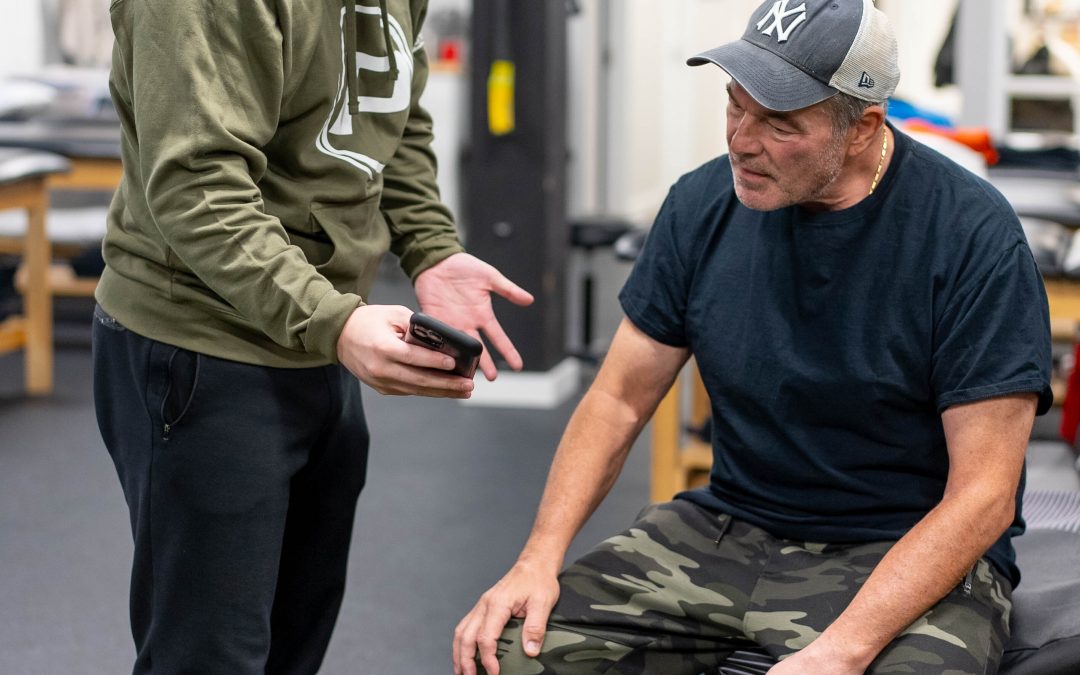Follow these simple guidelines for safe return to the gym injury free! Remember its being consistent on a weekly basis with a “do-able” workout versus the hot new trend on social media that promises a new body in 30 days….
1) The Adjustment period: We get it, the idea that we can get back into the gym is exciting and what better way than to smash every bench press, leg press and pull down machine we can find. However, we have not touched these types of weights in quite some time and our body has adapted to our “home workouts”. Although you might have taken up more running, biking, resistance bands and maintained some muscle tone, that still is not the same as the endless amount of dumbbells, machine use or barbells we see in the gym.
-Let’s use an introductory ramp up period of 4 weeks to return SLOWLY, keeping working sets LOW (1-2 sets) with EXTRA LIGHT warm up sets is a great way to adjust back into the gym safely. Tim Gabbett who is a leader in the study of workloads and how it relates to injury has a rule. The rule has shown that we don’t want to jump the total volume by more than 1.5x the amount we did the week prior. This means that if you start your 1st week with 2 sets of chest press the next week should not exceed 2 x 1.5. Meaning if you do 2 sets the first week then ramp up to 4 the next. You have broken the rule and from the research you are putting your body at an increased risk for injury.
2) Follow your Rate of Perceived Exertion (RPE): this is used to see how hard you are working. On a scale of 0-10, 10 being the hardest exercise you have ever done and 0 being sitting doing nothing, where would you rank the exercise you’re currently doing? In this first month you should be challenging upwards to a 5-6 out of 10 not working to a complete exhaustion (9-10) phase or failure. You want to complete the exercises saying to yourself “hmm, I felt I could have done more” that way you did the right amount so that we can get after it a few more times in that 7 day period. This emphasizes the point of consistency with training and if you go super intense on Monday and can’t move your arms or legs for 4 days, you lost a big chunk of your week limiting your ability to improve and the research tells us that moving too fast too soon leads to injury.
3) TEMPO training: I absolutely love this because it uses time and breathing to control your repetitions. For example, imagine a bicep curl with a 3-1-3 tempo. That means you should take 3 seconds to curl up then 1 second pause at the top and then 3 seconds down (free app called Sound Brenner for a metronome to keep you honest to the seconds). This requires you to use a lighter weight, focus on form, and listen to your body. Or as I educate my patients, instead of holding a plank for 30 seconds hold it for 10 breaths this way you are inhaling and exhaling fully so that you are not bearing down having your blood pressure sky rocket necessarily. All of which are sometimes forgotten when we are in the gym trying to rush though sets without considering the current state of your body.
If you are looking for more help on returning back to the gym or dealing with any nagging injuries from this pandemic please don’t hesitate to contact us and we will help you get back on track!
Antonio Colletti, DPT, CSCS
References
Bowen L, Gross AS, Gimpel M, Bruce-Low S, Li FX. Spikes in acute:chronic workload ratio (ACWR)
associated with a 5-7 times greater injury rate in English Premier League football players: a comprehensive 3-year study. Br J Sports Med. 2020;54(12):731‐738. doi:10.1136/bjsports-2018-099422
Gabbett TJ. The training-injury prevention paradox: should athletes be training smarter and harder?. Br J
Sports Med. 2016;50(5):273‐280. doi:10.1136/bjsports-2015-095788




